Japan Society Educator's Tour - Day 9 (Kochi & Hiroshima)
Today, we left Kochi city. I'd already packed the night before, so I thought that I would take pictures of Ueta-san and Eriko's house - basically what did it look like on the inside. This was my room:
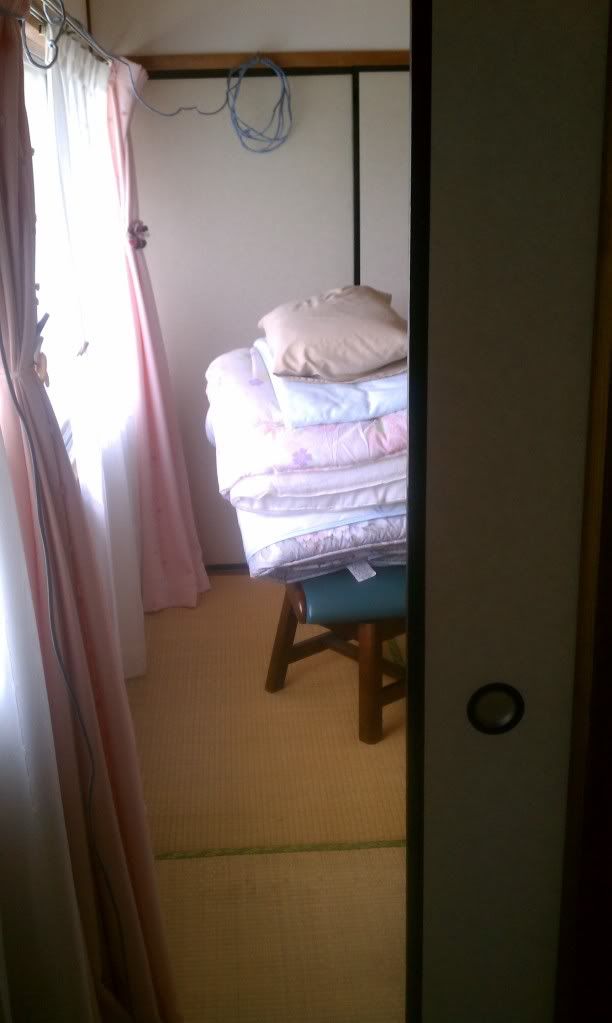
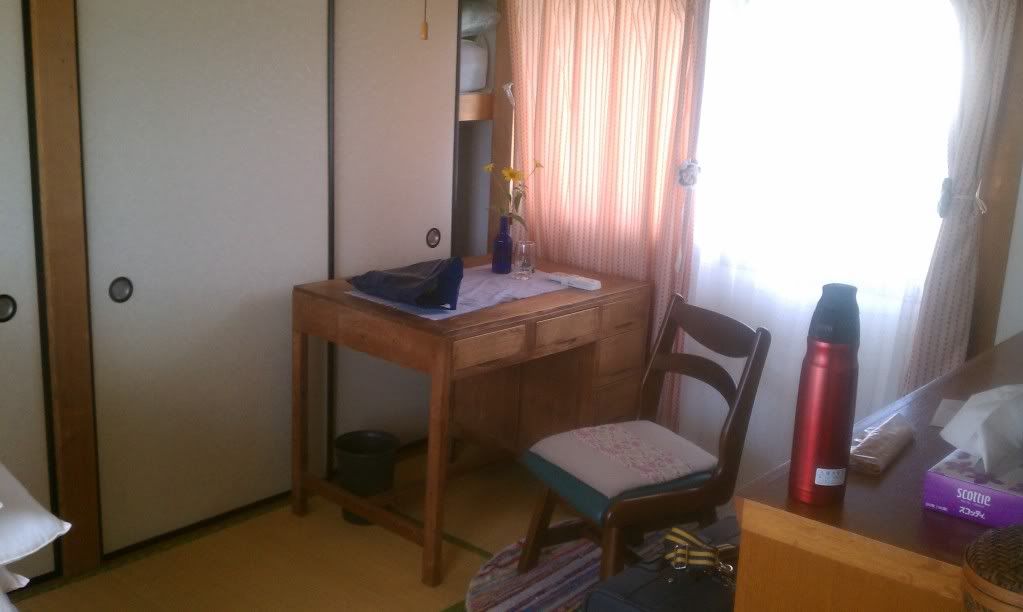
This is where Ueta-san taught me how to make the newspaper bags:
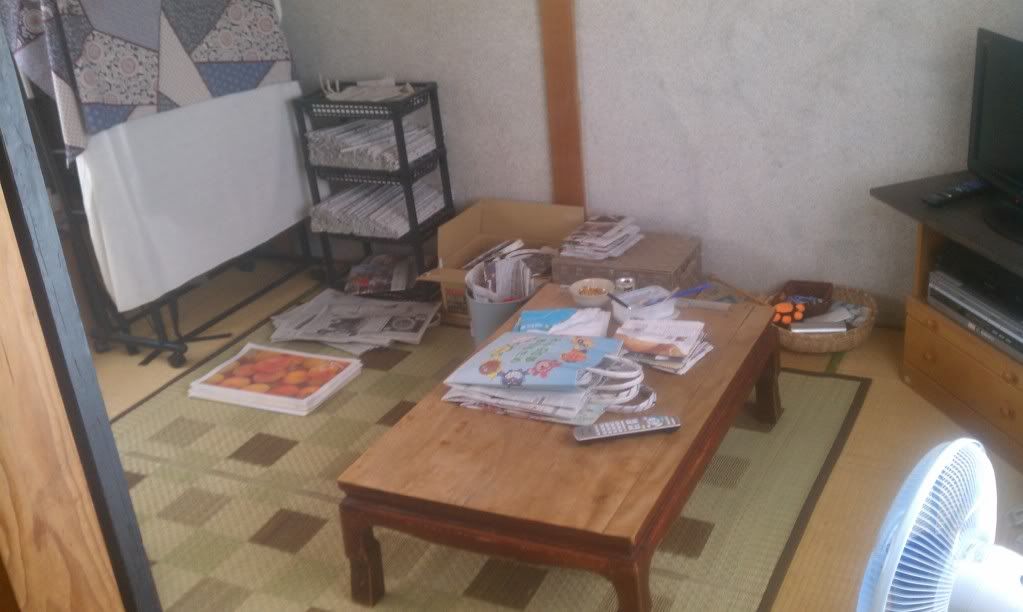
The stairs leading downstairs:
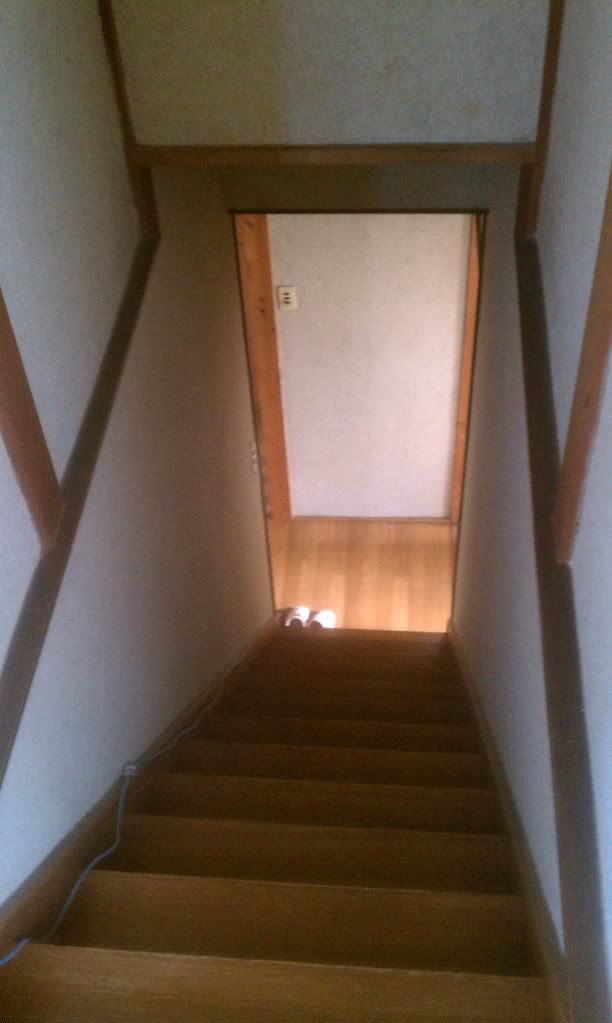
The living room, where we ate our meals - you can see Ueta-san having breakfast here.
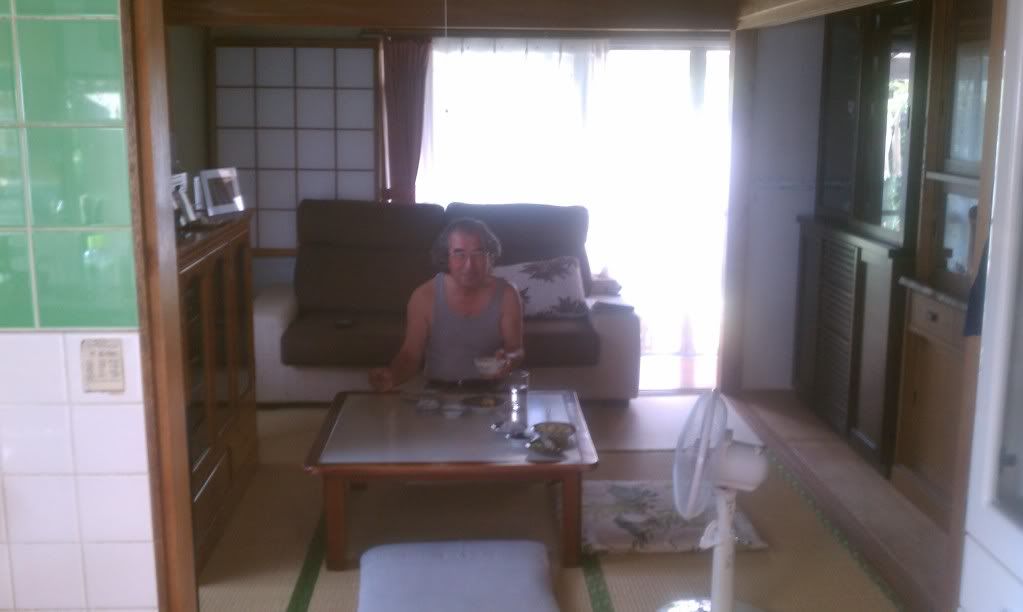
The kitchen:
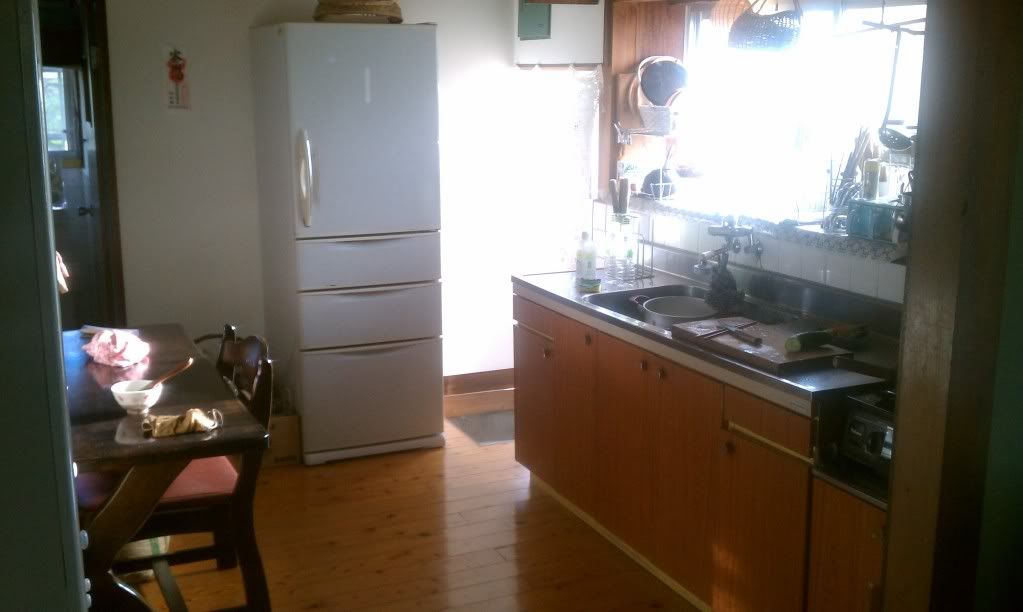
The bathroom (where you had to shower before you could use the bathtub):
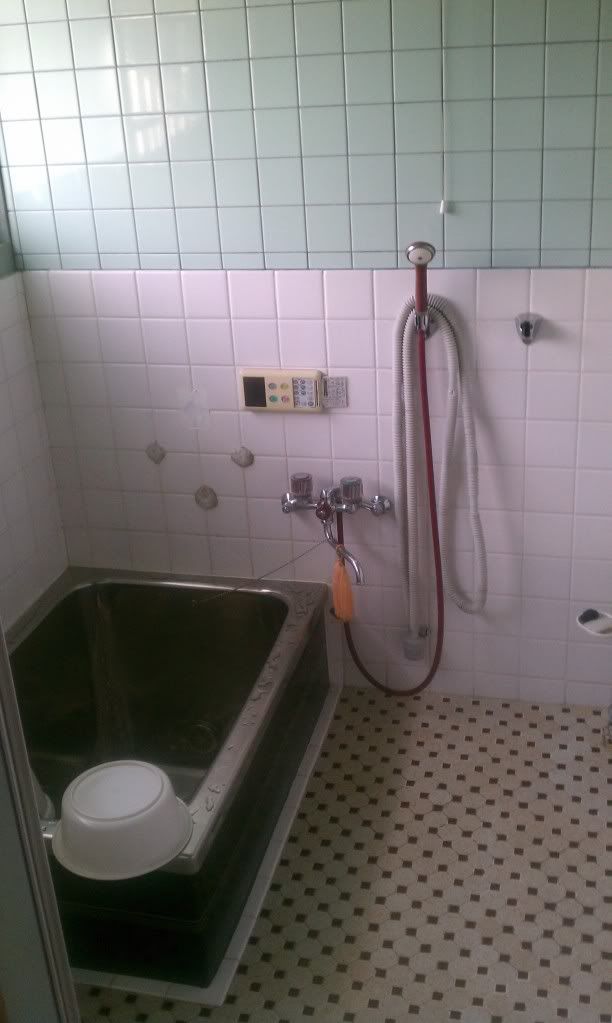
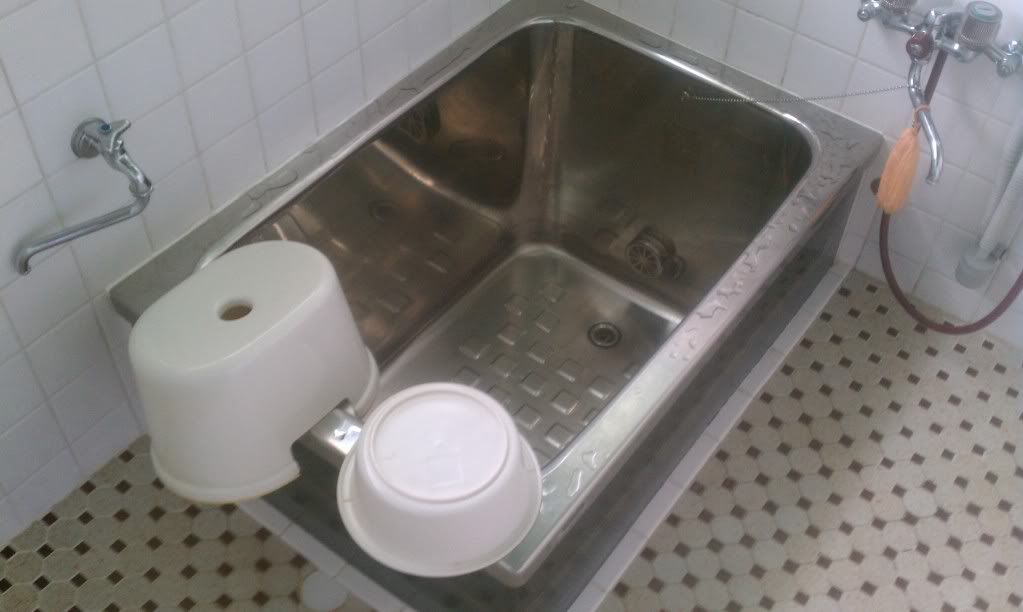
Their room:


Ueta-san's "media" room - he has a few movie memorabilia here as well as pictures of actors he's met and acted with.
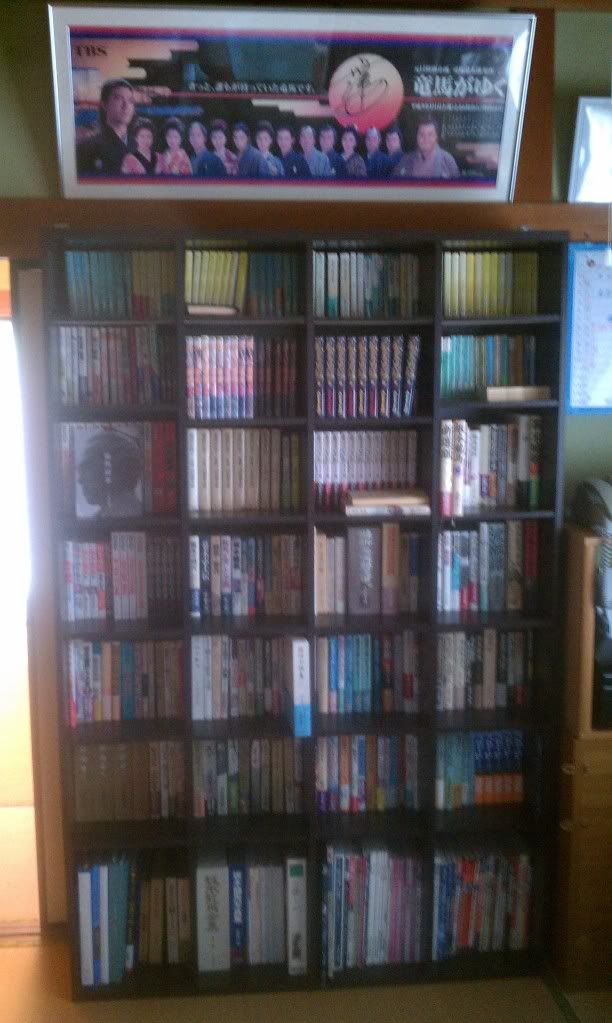
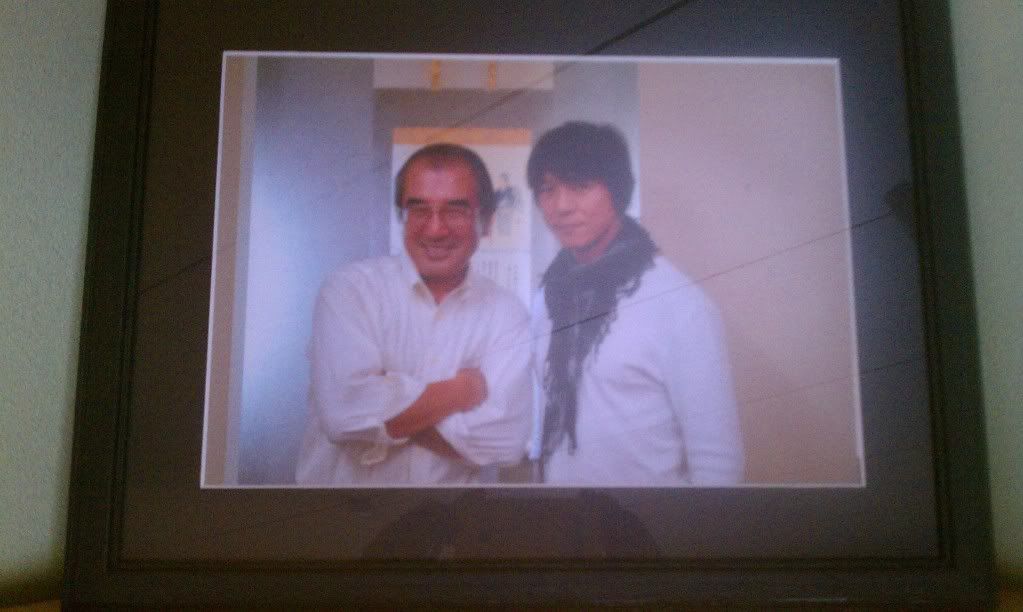
The front foyer:
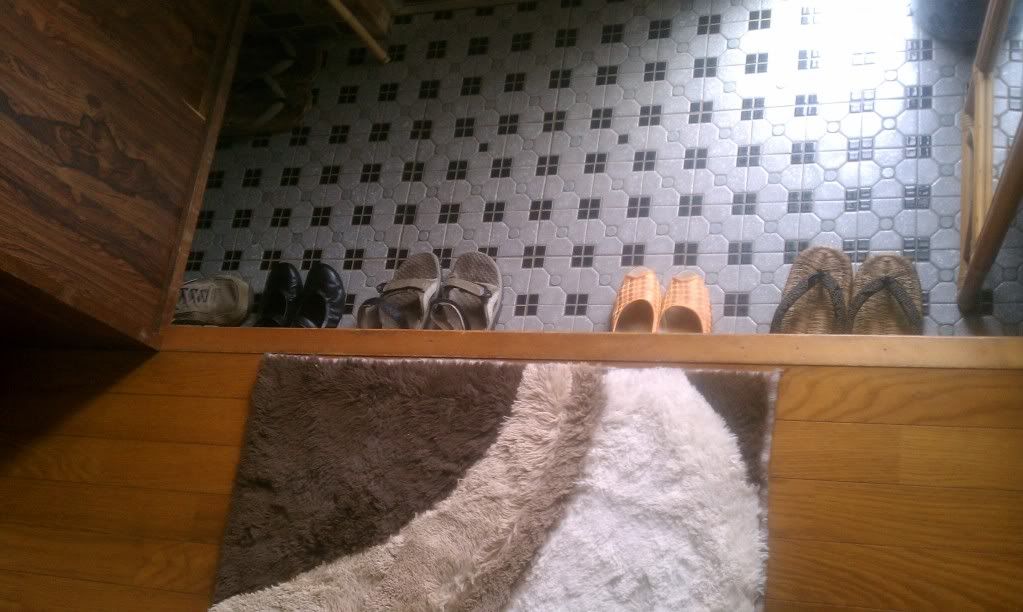
I wanted to take pictures of their house so that I could show them to my students back in NYC in my Japanese Culture class. I know they've seen anime where they show the inside of houses, but I thought it would be cool for them to see one for real.
So, we headed to the train station on our way to the next city, which was Hiroshima. All of our host families not only came to the rain station, but they came up to the tracks as well and waved at us from the platform as the train pulled away. It was so sweet. We waved at them until we couldn't see them any more.
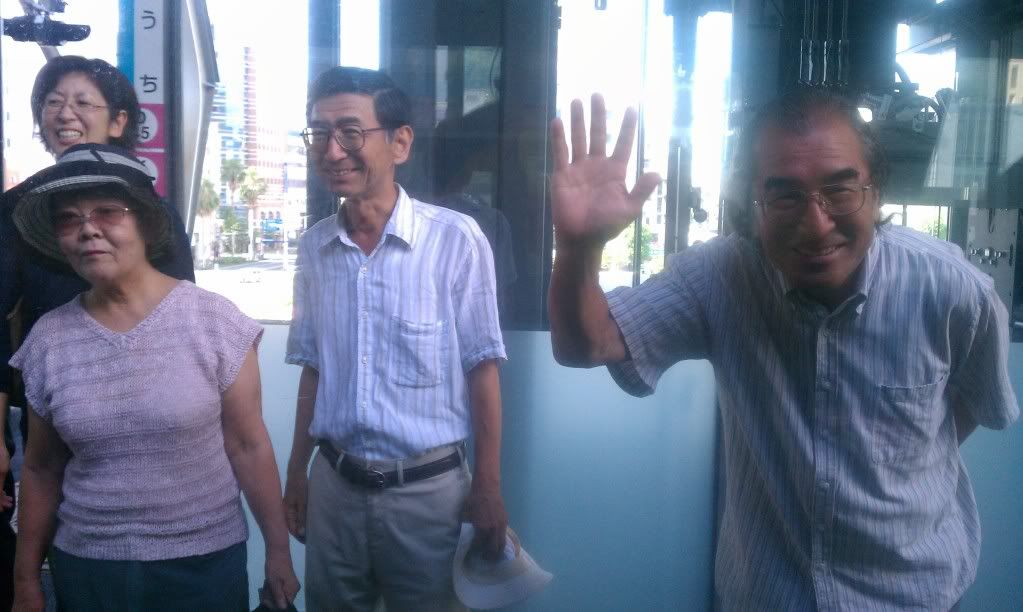
While I was still in the station, I ended up purchasing an Anpanman pastry. We saw him a lot of times in the city, since the creator lived there and there was a museum of his characters there as well.
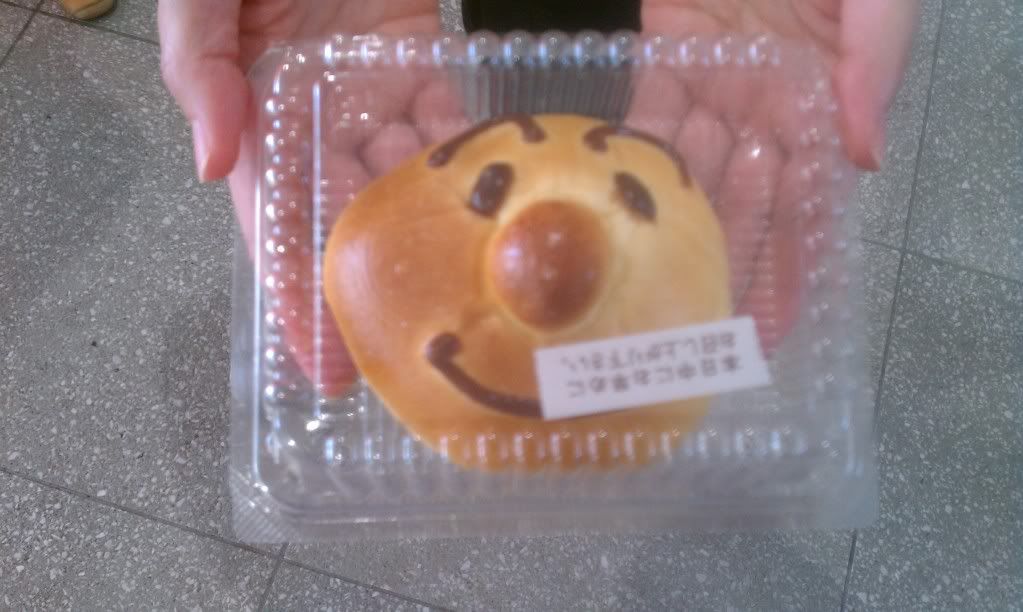
On the way to Hiroshima, we passed by a local train station, which I just had to take a picture of because of its name.
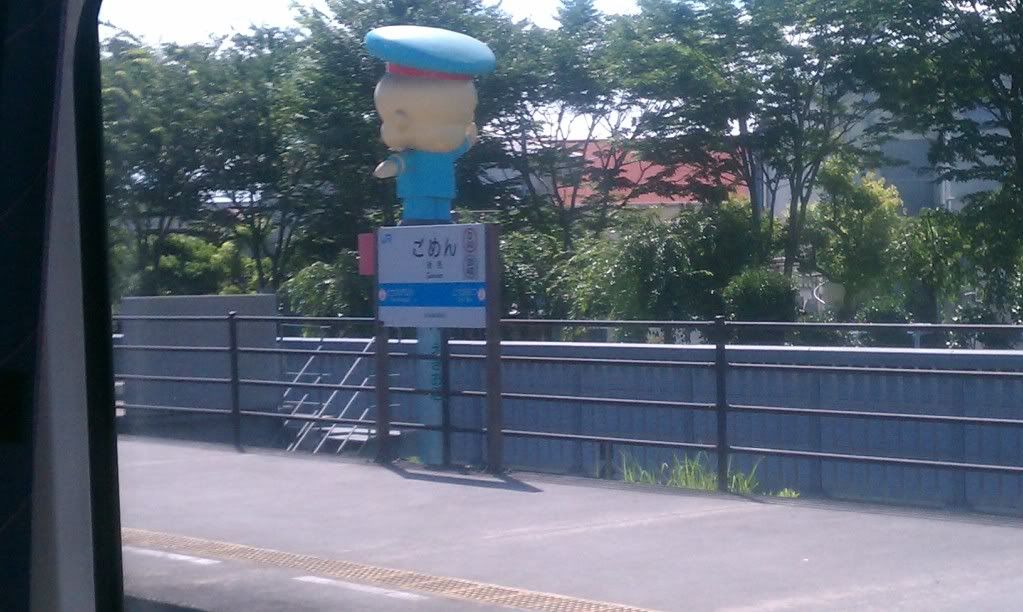
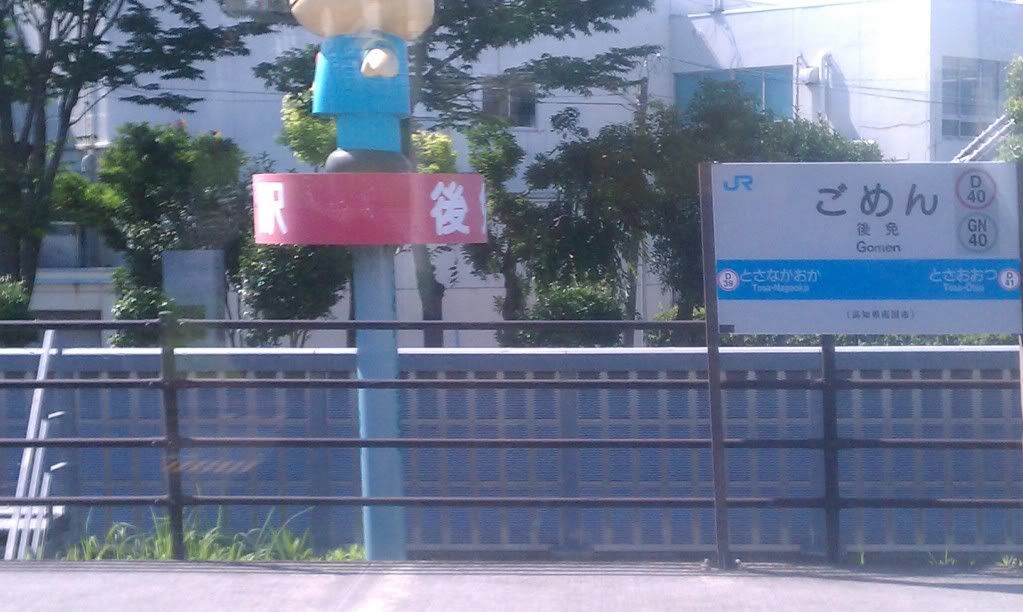
It's nicknamed the "I'm sorry station" because it's called "Gomen" station. Some times when I would see one of the trolly cars in the city,. it would say that it's destination was Gomen - the kanji is obviously different, but it's kinda funny to call it the "I'm sorry station. "
When we arrived in Hiroshima, we had lunch at the top of their hotel in a western style restaurant. The food was pretty good and it looked pretty on our plates too.

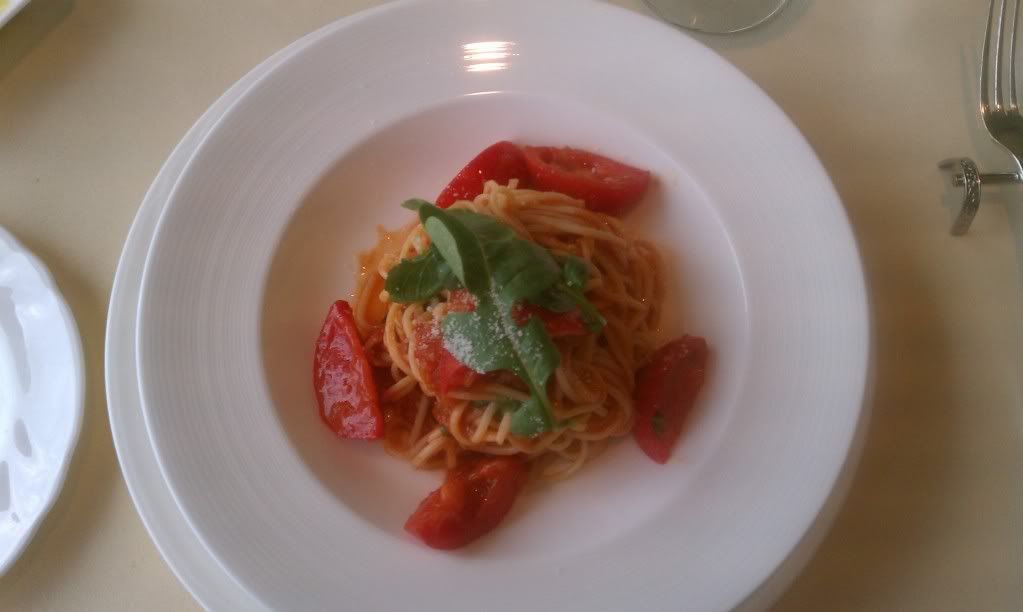
It didn't seem like a lot to eat, though... but that was before Rob told us we could have the all you can eat dessert bar.
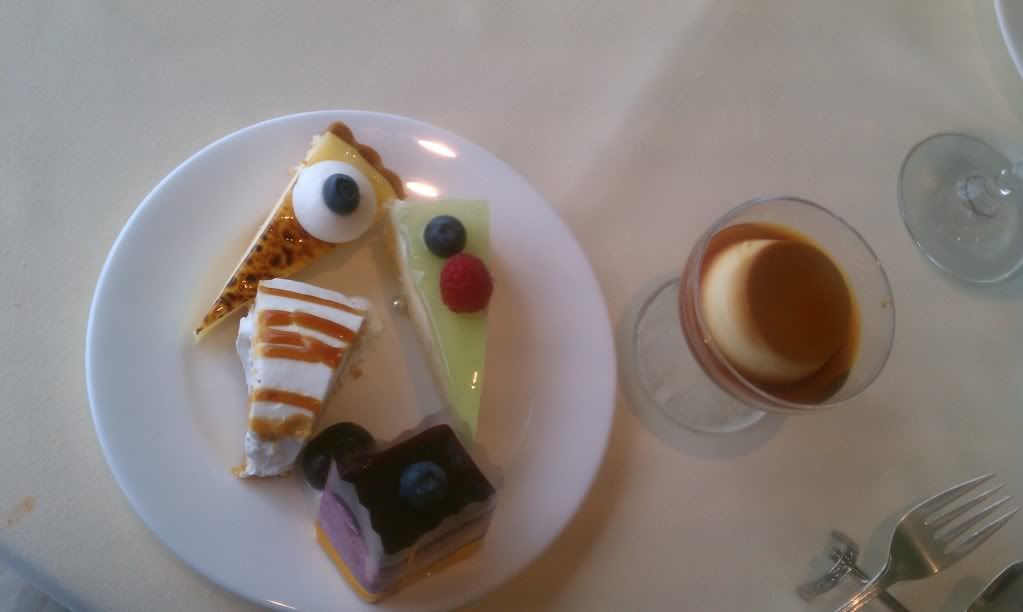
Afterwards, we went to the Peace Museum. This was the site where they commemorated the atomic bombing of August 6, 1945. It's a spacious area with many different memorials on the grounds.
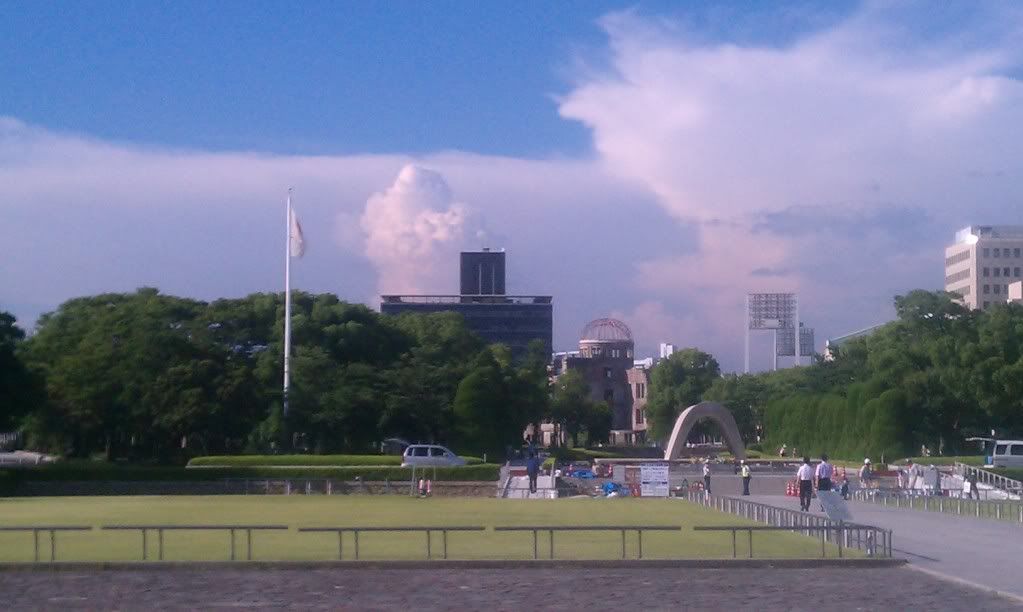
Doesn't that cloud in the background look... ominous?
So we went inside the museum. It had a very interesting setup. The entire building was split into two distinct areas - the first was essentially an exhibit with basic historical information of the events which led up to the atomic bombing.
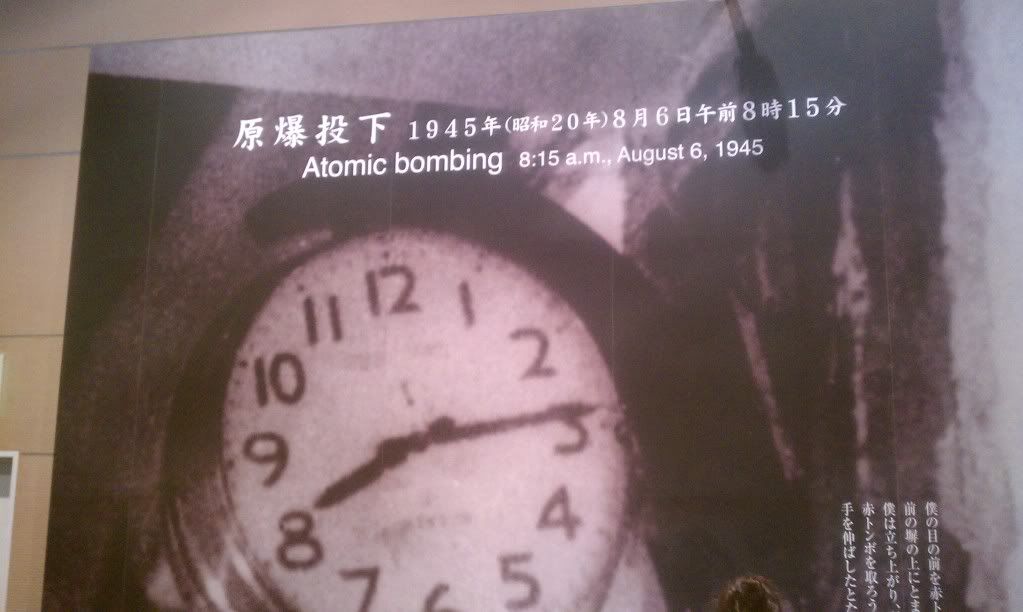
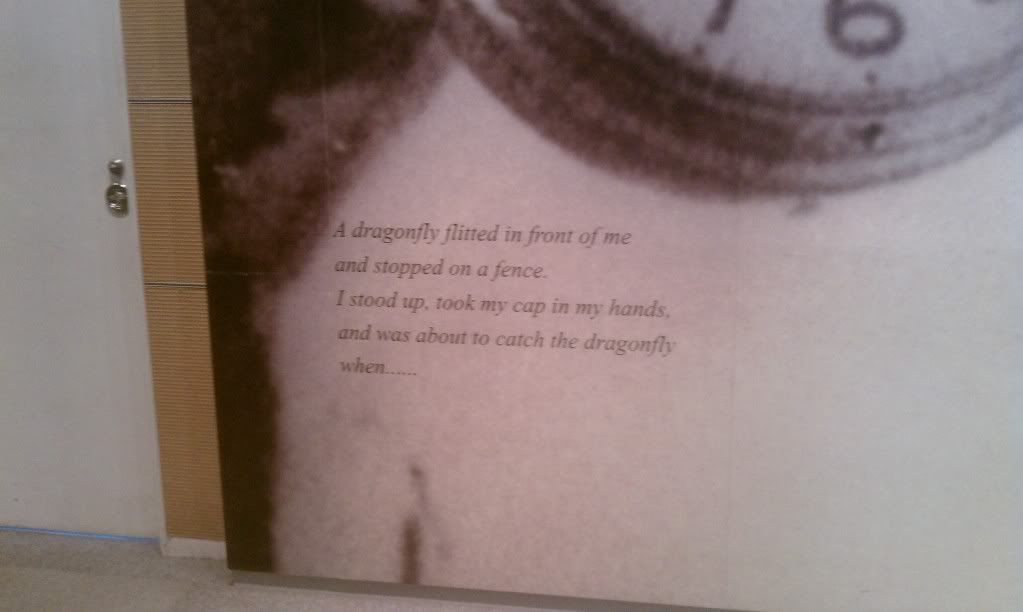
There were a few artifacts in this part of the museum, but to be honest, it was mostly posters detailing the sequence of events which led up to the bombing. Interestingly enough, they stated that the reason the bomb was dropped was to send a message to Russia and to prevent their advancement in the war. They had a scale size model of the city, with a suspended ball that represented where the bomb was detonated. I hadn't realized that the atomic bomb did not actually strike the ground, but was detonated about 600 meters above the city. In addition to that, this hypopoint (as it's called) created a ball of fire that was the temperature of the sun for about 5 seconds.

The second part of the museum was much more visceral and heart-wrenching. It was definitely planned that way. First, we walked through this darkened tunnel/alley that was probably a bombed out replica from a city street.
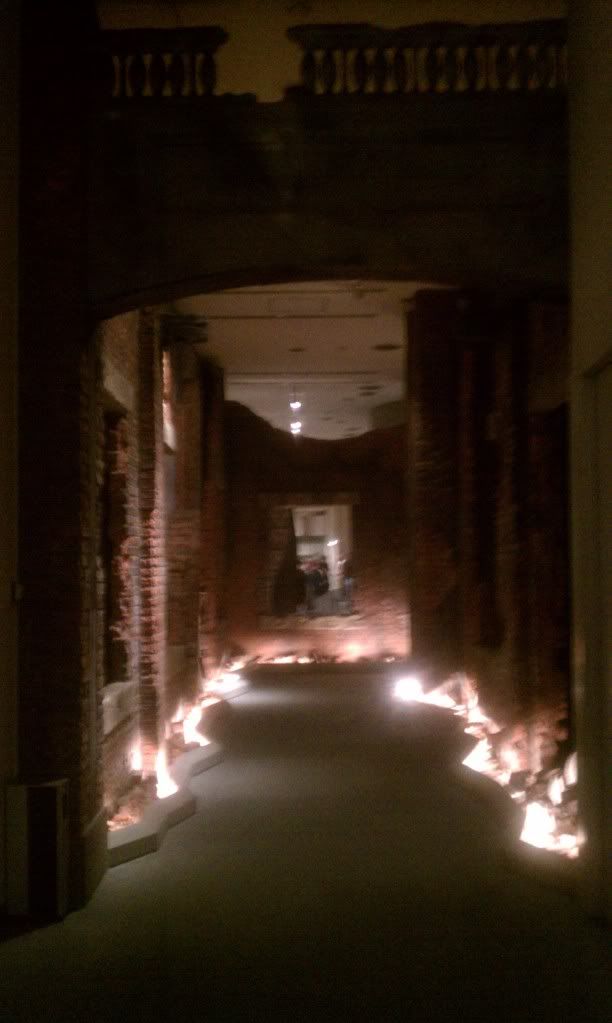
When you turned the corner there was a diorama on display which showed human figures, walking through a burning city, their clothing in tatters and their skin dripping from the bodies like wax. I didn't take a picture of it because I thought that it was too gruesome and I actually thought it wasn't appropriate to take it. I did take many pictures of the artifacts in the museum, but then I discovered that 1) the museum has a website that has cataloged many of these items in picture form, much better than my cellphone shots and 2) I also purchased a book that has many of these images recorded (however, I mailed it from Japan using surface, so I should get it in NYC in about a month.) Nevertheless, there are some images I wanted to share from the museum: First, there's the tricycle. It belonged to a 4 year old boy who was playing outside when the bomb struck. He was burned from the flash of the bomb and eventually died. So his father buried him with the tricycle, because he thought that his son would not be lonely if he had the tricycle to play with. In 1985, he exhumed the body and buried it in the family plot and then donated the tricycle to the museum.
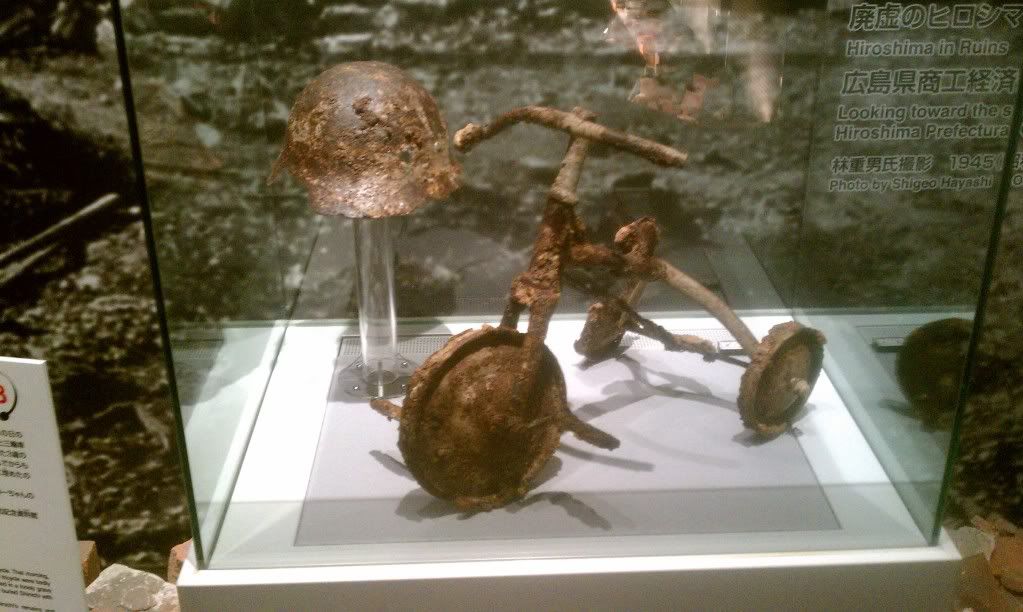
There were so many children's clothing/uniforms on display because they were being used in the city to create fire breaks. Basically, they would go around to structures that could burn easily and they dismantled them, creating barriers against possible outbreaks of fire.
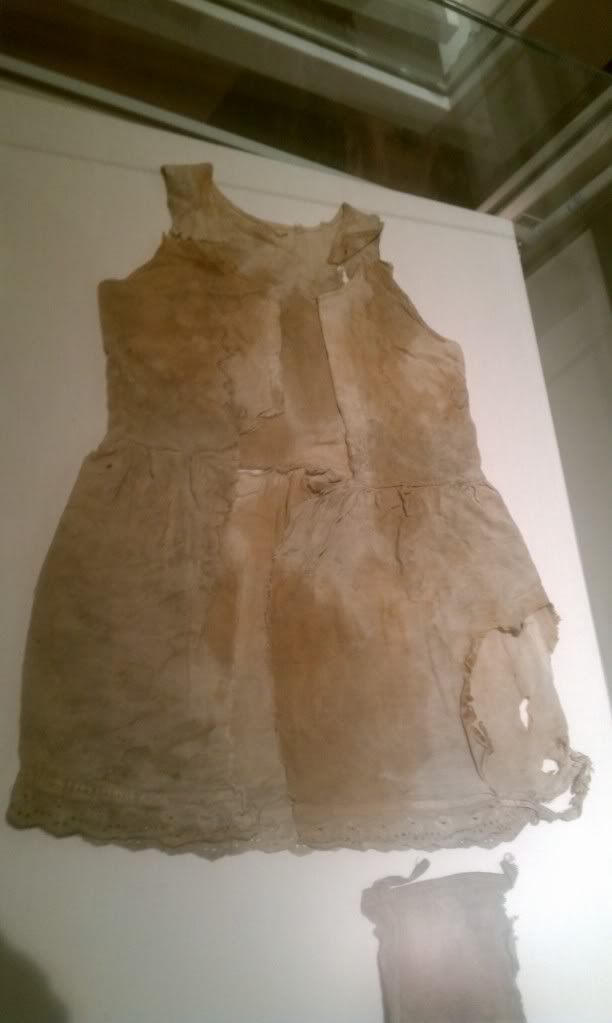
The caption on this dress indicated that it was a girl's summer school uniform and that the child herself had sewn it together. Many of the exhibits were like this - essentially a sucker punch to the gut. It was a little difficult to read through everything and see everything that was there. Afterwards, we roamed the park area by the museum.
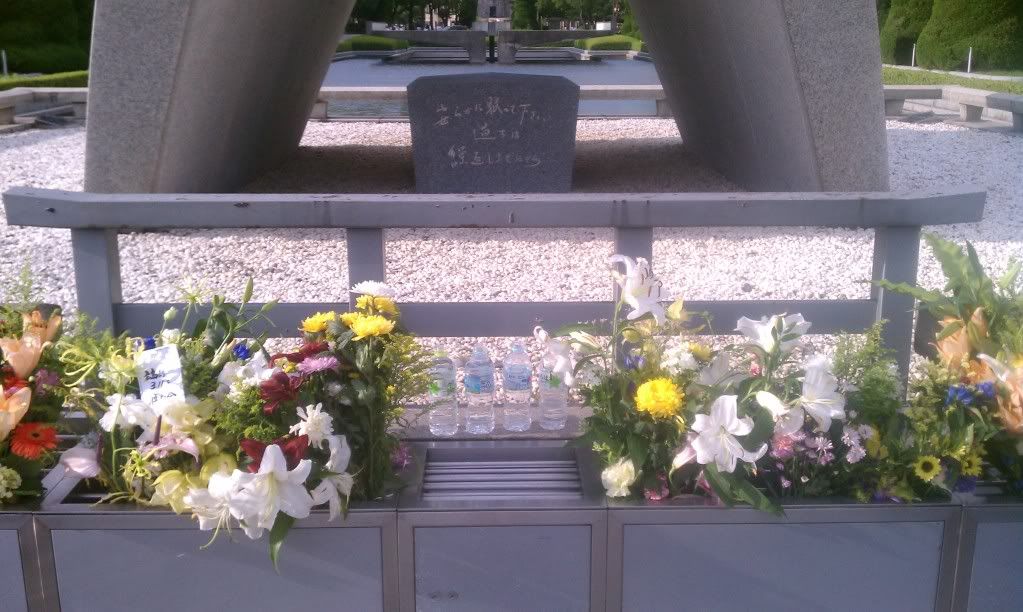
This was the main monument which ran down the center walkway of the park. There were various other exhibits there as well, some for children, some for the Koreans who were in the city at the time of the bombing, as well as an exhibit showing multiple examples of 1000 cranes.
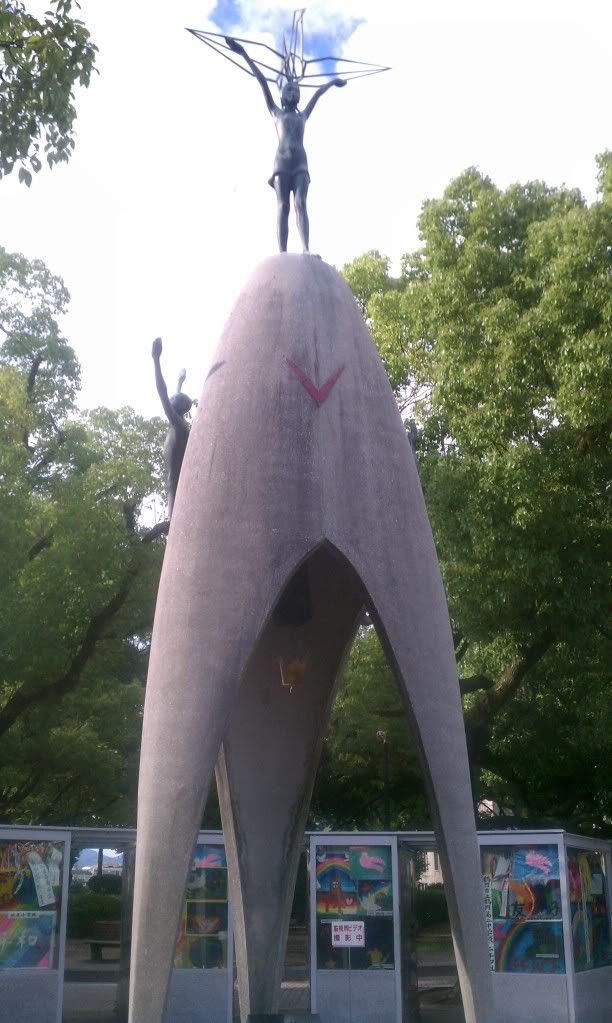
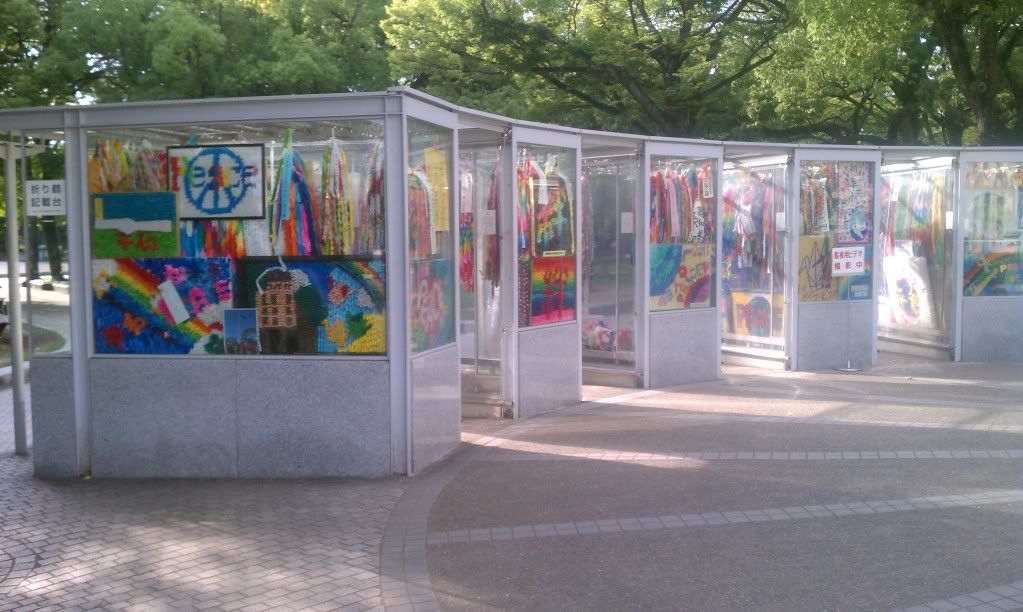
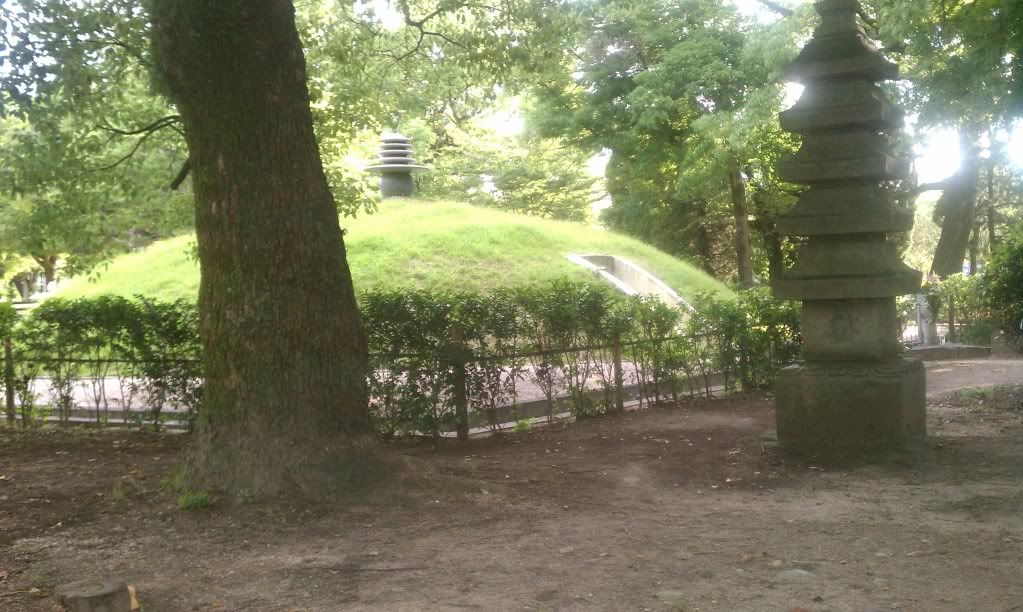
Then, there was the most stark reminder of the bombing, the Industrial Exhibition Building, which had been renamed the A-Bomb Dome for obvious reasons.
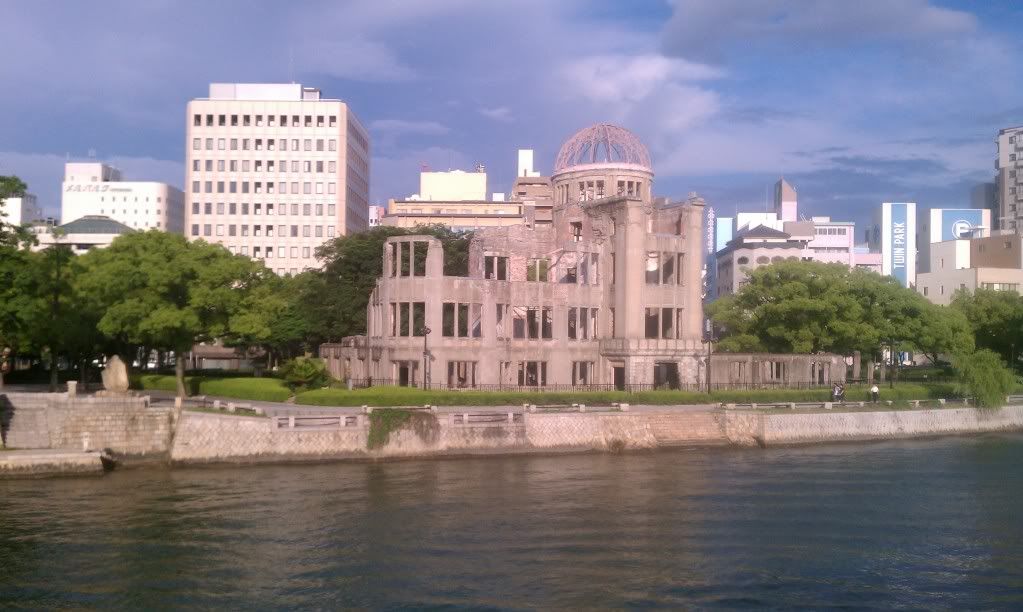

It was a little spooky to see it - a skeleton from the past. Later, Rob took us to the area where the hypocenter was believed to have been pinpointed. The bridge we walked across eventually ended in a "T" shape and was supposed to be the original target for the pilots of the Enola Gay to use when dropping the bomb. However, they missed.

It was a bit strange, then, when we walked down this side street, with a parking lot, a convenience store, and apartment buildings, only to discover that this was the location.

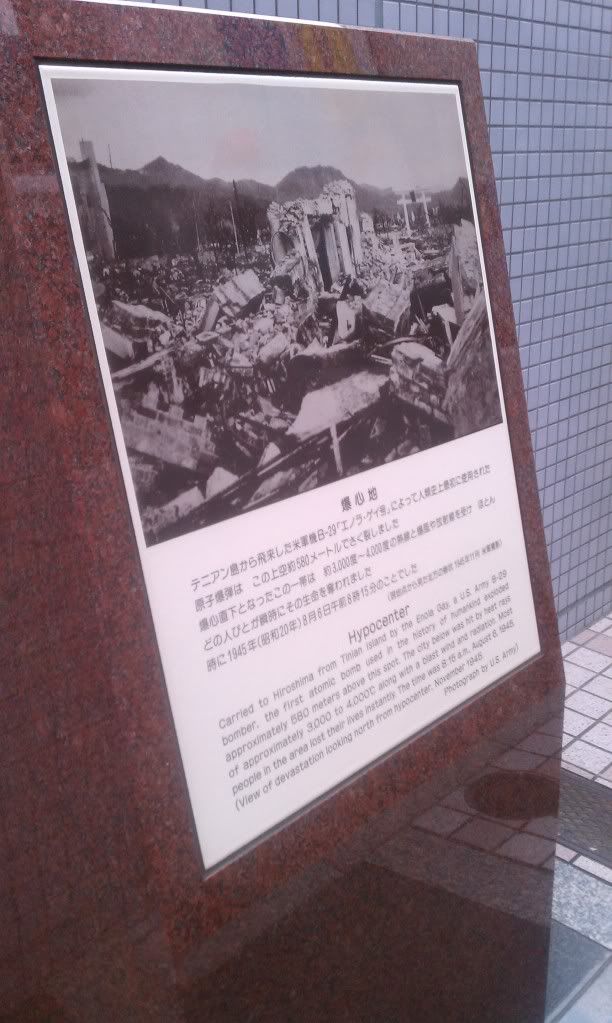
It was like it was stuck in a small corner, tucked away, where no one could see it. Not that this was how the Japanese had planned it, but nevertheless it was an odd sort of memorial. Later that night, we had dinner at an okonomiaki place, because Hiroshima okonomiyaki was supposed to be THE thing to try while we were here. I have no pictures, because I didn't bring my cellphone, but the food was INCDREDIBLY yummy! We all sat at the counter where they prepared the food right in front of us. Okonomiaki is like a pancake/omelet and the specialty of Hiroshima's version included a layer of noodles in the pile of food. And I do mean PILE.
I also had seafood included in my version. I also ordered a plum wine drink... and it was the BEST plum wine I'd ever had in Japan! I like my wines on the sweet side, but this was both sweet and tart, giving a refreshing drink that I loved so much, I ordered 2 of them. The next day would prove to be the most difficult we'd experienced while in Japan - we were going to meet a Hiroshima survivor and hear his story.


This is where Ueta-san taught me how to make the newspaper bags:

The stairs leading downstairs:

The living room, where we ate our meals - you can see Ueta-san having breakfast here.

The kitchen:

The bathroom (where you had to shower before you could use the bathtub):


Their room:


Ueta-san's "media" room - he has a few movie memorabilia here as well as pictures of actors he's met and acted with.


The front foyer:

I wanted to take pictures of their house so that I could show them to my students back in NYC in my Japanese Culture class. I know they've seen anime where they show the inside of houses, but I thought it would be cool for them to see one for real.
So, we headed to the train station on our way to the next city, which was Hiroshima. All of our host families not only came to the rain station, but they came up to the tracks as well and waved at us from the platform as the train pulled away. It was so sweet. We waved at them until we couldn't see them any more.

While I was still in the station, I ended up purchasing an Anpanman pastry. We saw him a lot of times in the city, since the creator lived there and there was a museum of his characters there as well.

On the way to Hiroshima, we passed by a local train station, which I just had to take a picture of because of its name.


It's nicknamed the "I'm sorry station" because it's called "Gomen" station. Some times when I would see one of the trolly cars in the city,. it would say that it's destination was Gomen - the kanji is obviously different, but it's kinda funny to call it the "I'm sorry station. "

When we arrived in Hiroshima, we had lunch at the top of their hotel in a western style restaurant. The food was pretty good and it looked pretty on our plates too.


It didn't seem like a lot to eat, though... but that was before Rob told us we could have the all you can eat dessert bar.


Afterwards, we went to the Peace Museum. This was the site where they commemorated the atomic bombing of August 6, 1945. It's a spacious area with many different memorials on the grounds.

Doesn't that cloud in the background look... ominous?

So we went inside the museum. It had a very interesting setup. The entire building was split into two distinct areas - the first was essentially an exhibit with basic historical information of the events which led up to the atomic bombing.


There were a few artifacts in this part of the museum, but to be honest, it was mostly posters detailing the sequence of events which led up to the bombing. Interestingly enough, they stated that the reason the bomb was dropped was to send a message to Russia and to prevent their advancement in the war. They had a scale size model of the city, with a suspended ball that represented where the bomb was detonated. I hadn't realized that the atomic bomb did not actually strike the ground, but was detonated about 600 meters above the city. In addition to that, this hypopoint (as it's called) created a ball of fire that was the temperature of the sun for about 5 seconds.

The second part of the museum was much more visceral and heart-wrenching. It was definitely planned that way. First, we walked through this darkened tunnel/alley that was probably a bombed out replica from a city street.

When you turned the corner there was a diorama on display which showed human figures, walking through a burning city, their clothing in tatters and their skin dripping from the bodies like wax. I didn't take a picture of it because I thought that it was too gruesome and I actually thought it wasn't appropriate to take it. I did take many pictures of the artifacts in the museum, but then I discovered that 1) the museum has a website that has cataloged many of these items in picture form, much better than my cellphone shots and 2) I also purchased a book that has many of these images recorded (however, I mailed it from Japan using surface, so I should get it in NYC in about a month.) Nevertheless, there are some images I wanted to share from the museum: First, there's the tricycle. It belonged to a 4 year old boy who was playing outside when the bomb struck. He was burned from the flash of the bomb and eventually died. So his father buried him with the tricycle, because he thought that his son would not be lonely if he had the tricycle to play with. In 1985, he exhumed the body and buried it in the family plot and then donated the tricycle to the museum.

There were so many children's clothing/uniforms on display because they were being used in the city to create fire breaks. Basically, they would go around to structures that could burn easily and they dismantled them, creating barriers against possible outbreaks of fire.

The caption on this dress indicated that it was a girl's summer school uniform and that the child herself had sewn it together. Many of the exhibits were like this - essentially a sucker punch to the gut. It was a little difficult to read through everything and see everything that was there. Afterwards, we roamed the park area by the museum.

This was the main monument which ran down the center walkway of the park. There were various other exhibits there as well, some for children, some for the Koreans who were in the city at the time of the bombing, as well as an exhibit showing multiple examples of 1000 cranes.



Then, there was the most stark reminder of the bombing, the Industrial Exhibition Building, which had been renamed the A-Bomb Dome for obvious reasons.


It was a little spooky to see it - a skeleton from the past. Later, Rob took us to the area where the hypocenter was believed to have been pinpointed. The bridge we walked across eventually ended in a "T" shape and was supposed to be the original target for the pilots of the Enola Gay to use when dropping the bomb. However, they missed.

It was a bit strange, then, when we walked down this side street, with a parking lot, a convenience store, and apartment buildings, only to discover that this was the location.


It was like it was stuck in a small corner, tucked away, where no one could see it. Not that this was how the Japanese had planned it, but nevertheless it was an odd sort of memorial. Later that night, we had dinner at an okonomiaki place, because Hiroshima okonomiyaki was supposed to be THE thing to try while we were here. I have no pictures, because I didn't bring my cellphone, but the food was INCDREDIBLY yummy! We all sat at the counter where they prepared the food right in front of us. Okonomiaki is like a pancake/omelet and the specialty of Hiroshima's version included a layer of noodles in the pile of food. And I do mean PILE.

I also had seafood included in my version. I also ordered a plum wine drink... and it was the BEST plum wine I'd ever had in Japan! I like my wines on the sweet side, but this was both sweet and tart, giving a refreshing drink that I loved so much, I ordered 2 of them. The next day would prove to be the most difficult we'd experienced while in Japan - we were going to meet a Hiroshima survivor and hear his story.